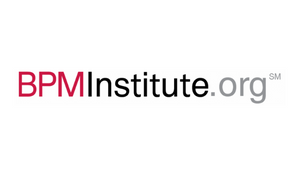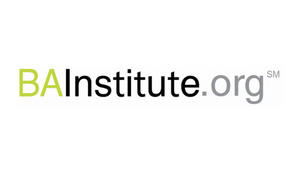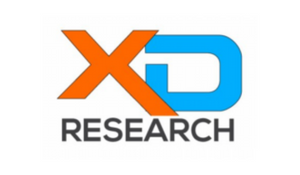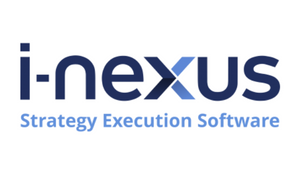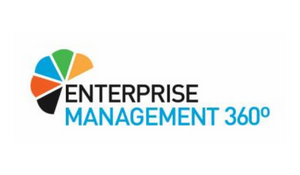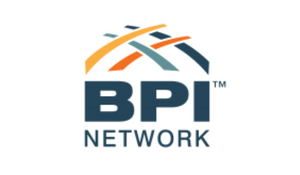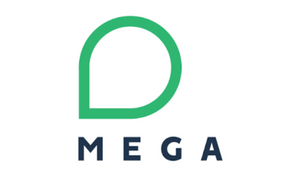

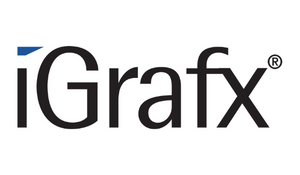

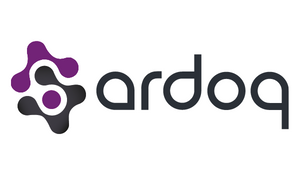
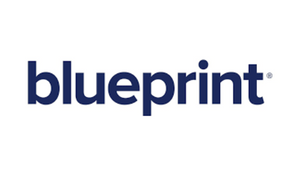
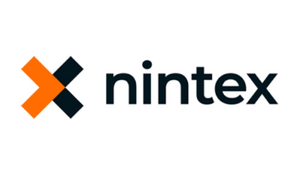
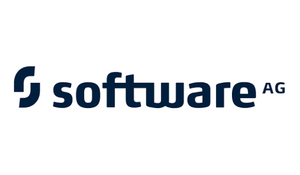

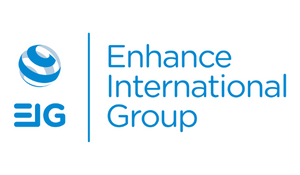

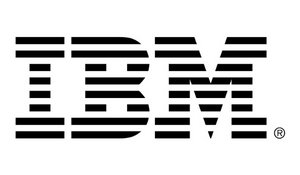

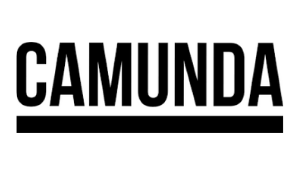
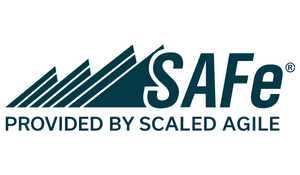
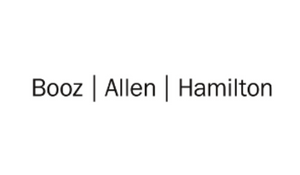
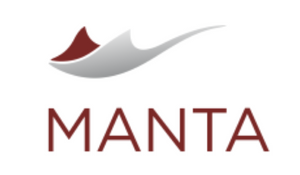



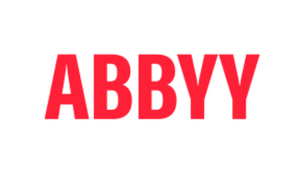

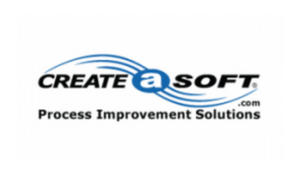




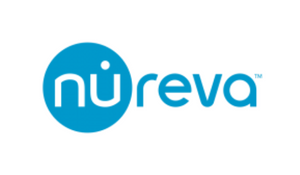
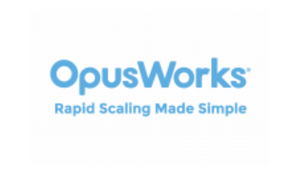
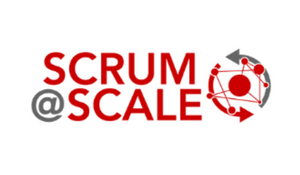

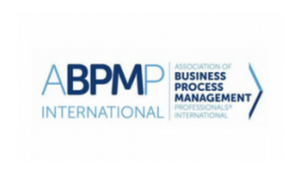
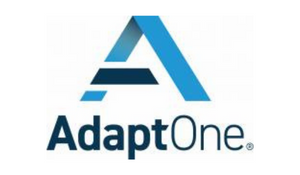
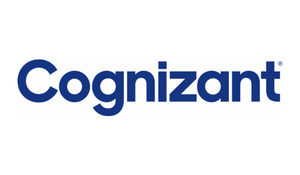
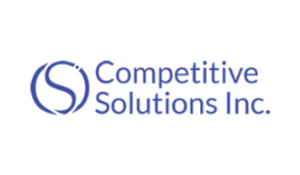


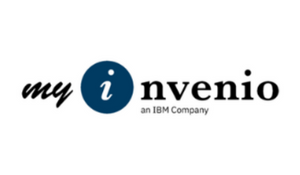
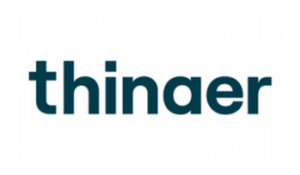
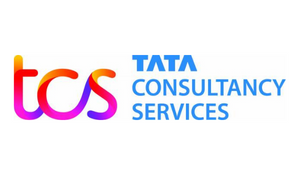
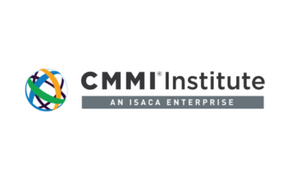


Courtesy of Innovation & Excellence's José Pires, below is a transcript of his speaking session on 'Excellence & Innovation Acceleration: Value Creation in Times of Uncertainty and Rapid Change' to Build a Thriving Enterprise that took place at Digital Transformation Workplace Live Virtual Conference.
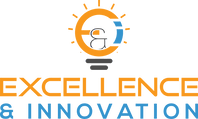

Session Information:
Excellence & Innovation Acceleration: Value Creation in Times of Uncertainty and Rapid Change
In a disrupted world, how do you build a culture and practices where extraordinary innovation
The key ingredients to innovation acceleration are not what you see portrayed most often in the media. Great, enduring organizations know what it really takes to create and, most importantly, scale innovation during market disruptions.
We will explore how to blend disciplined innovation methods with elements of venture capitalism, crowdsourcing and collaborative leadership to deliver rapid and sustainable business improvements and innovations across all industries.
Session Transcript:
Discussing with you, while we have observed, for nearly three decades now, of successful transformations at the digital level, at the business level, and at the cultural level, what is, what are the key principles and mechanisms that internally great organizations have? So, I would like to change hats now and I'm gonna put the hat of innovation on. So, change my background quarterly for that.
And I encourage you to submit your questions as we go along this journey. Some of you may know me, may have seen portions of this presentation. This is the opportunity for you to go deeper on to onto items that are most important to you as part of the discussion that we're going to have.
So, excellence and innovation, acceleration, culture, business, and digital transformations.
So, let's start that journey here, together.
And the, and let me bring up my presentation here so that you can see it.
And you already have that, be shared with you.
Excellent. And let's start with a question.
What do you think matters most?
And I'm gonna give you four options, and it matters most in the context of not only having a successful transformation, but, but that's successful. Transformation means that you have enduring great performance. And that performance is translated into value creation, for all the stakeholders. Value creation for customers, value creation for employees, Value creation, for distrust for society as well. So when you look at successful transformations, what do you think matters most in the long term, in the long run? Is it about ideas? Is it about methods? Is it about technologies? Or is it about people? And don't dive into answering this real quickly, go into the questions box and think about it. Your own experiences when you see a lot enduring great organizations who have undergone successful transformations, what is the most important component of that? Be honest and be practical about it. Not what you think it should be what you have observed in the past.
Right now, go on to the questions box on the go to Webinar interface and please submit your input. What is most important? Is that ideas? Is a technologist? Is it methods? Is it technologists: Or, is it people? So, I'm waiting for your feedback here, ideas, methods, technologies, or people pick one out of this for as, what matters most?
And, I'm, I'm, Oh, I see it, William Fuller already has provided his input.
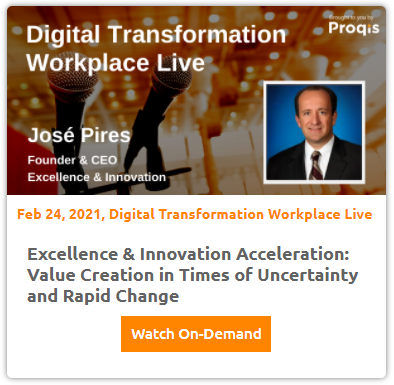 I see William Farewell Alan. Then this ... Cyprian, I'm looking for all of your input and the is it ideas? Is a math does, Is it, technologists or is it people keep, keep providing or input under the questions box submit as a question. one out of this four items. What matters most? I'm looking for your input on that.
I see William Farewell Alan. Then this ... Cyprian, I'm looking for all of your input and the is it ideas? Is a math does, Is it, technologists or is it people keep, keep providing or input under the questions box submit as a question. one out of this four items. What matters most? I'm looking for your input on that.
I'm gonna give you the answer later on, but I want you to think about this ahead of time, and give me your honest answer based on your experiences.
What matters most ideas, methods, technologists, people, great, jazz geo? Great, I see hide their wonderful, remember, my tears. I see your input. I'm not going to say what it is, because I don't want to bias.
All right, Patty, I see your input, Tony, I got it. Just, I see you saying hello, I'm interested in on what you have to say about what matters most ideas, methods, technologists, or people, what is going to be the most important factor for a successful transformation.
So, great, great participation. I'm seeing lots of inputs coming up, and, and, and what I see here, where I don't wanna picking winners for you right now, I'm going to say that there is a pretty, even distribution.
And it's interesting, because I believe that you're being honest, And the reason for that, if you're just saying things to kind of believe me, or think that this is what he wants to hear.
You, most of you would be voting for people, because you'll be, like, well, people are most important, assets, so That's. that's wonderful, so, you know, that must be people, right?
But I asked you that question of a caveat that I want you to be honest, And based on your experiences, and why, what you have seen, a lot of you, anyway, who have been in the industry for a long time, a multiple industries. What you have seen is that we all value people, disproportionally, there's no doubt about that.
But that's not the way the industry is often behavior, when they are going for transformations.
People are our most important asset, but very often people are the first ones to go.
So is it really true, or is this some sort of idea that sounds noble?
So I really like the Astros, because there is a very even distribution among ideas, methods, technologists, and people because you're being honest and practical about it. You're not just taking some theoretical answer, and flowing back, and you, and that's very important.
Theory is nice. But we're gonna be talking about here is a practitioner's view of successful transformations. Not what we want to hear, but what actually? What the evidence shows to us. And then we're going to try to understand what that evidence means. And we're gonna build on that.
Now, great insights, great input. Now the journey to greatness is filled with bureau barrel. It's, it's not easy. It's very, very hard.
And that's why the overwhelming number of organizations that will fail at that.
And the reason is because to transform and achieve greatness. You must have a vision of what they may look like, and then you have to innovate towards their vision.
 And then you have to learn how to transform yourself towards the vision. This is incredibly complex.
And then you have to learn how to transform yourself towards the vision. This is incredibly complex.
And no wonder most organizations will fail miserably at this effect.
I would say that less than 1% off transformations are successful based on our empirical evidence.
Not some survey report or some, you know, input from respondents. This is by observing over nearly three decades transformations, the success rate is incredibly small. And the reason for that is because transformations are about, affect your culture.
And they are incredibly hard, because cultures, like people, will resist what they most need to change. This is not an easy process for organizations.
As much as it is not an easy process for people, change is fine, and transformation is fine for all of us. As long as it does not affect us personally. When it affects us personally, we don't like it. Why is that? Well, because we're not wired for change and transformation, we are wired for safety, reliability, and predictability.
And organizations are a reflection of us, as human beings. So we should not be surprised that transformations fail at the rate that they do, because there'll be incredible resistance on that transformation around the most important components of those transfer of that transformation.
So let's address the issue again, law matters most. Is that ideas? Is it methods, is the technologists, or is it people?
So I'm gonna give you an answer based on over 100 cross industry organizations who have attempted to transform themselves, and over 30,000 excellence and innovation leaders, a more now than a thousand organizations that continue on their journey.
And the answer is interesting, because it's all of the above, and none of the above in isolation.
So it's about the intelligent blending of each one of these components, and I'm going to make your mind twist a little bit further. Because I'm going to say things that will feel very contradictory.
I will say things like ideas are incredibly important. We need to create a meritocracy of ideas so that we understand what's going on in the organization. And what ideas are professionals have. And then I'll say, and ideas are everywhere. What are in common? Are people willing to put the reputation behind ideas?
Then, I'll say the methods are incredibly important, because they provide a discipline framework for execution of improvements, and innovations, and the transformation.
And then, I'll also say, that I have been, for more than 25 years, a certified Lean six Sigma Master Black Belt, and, for most people, that sounds like a dangerous mental condition. It doesn't help them.
So, methods are important, but methods do not transform businesses.
People do, OK, OK, she'll say I get it, I get it must be about technologists, right? Because look at this conference, so we're talking about all these different types of technologies: AI, and Natural language processing, RPA, process mining, and the list goes on and on exponential technologies, because we're an exponential times.
Well, hold on there, technologies are great when they enable your process, your value creation processes, to deliver a great value for your customers.
But technologists can also make stupid happen at the speed of light.
So, it's not just about, it's not just about technologies.
So, it must be around people, this was around the roundabout way of telling me that people are our most important asset after all mm. And as much as I want to admit that.
Because I feel that almost viscerally in most organizations that is actually not true when you look at the behaviors of senior leaders.
What you look at the behaviors of senior leaders, yeah, all people kinda matter. But the ones that really matter are the, what they call, the right people and the right people are the amplifiers of the behaviors that you want to emulate in your transformation.
And those are special people.
So as you can see here, there are no simple answers black or white answers. When it comes just to meaningful transformations. The world of greatness is filled with seemingly contradictions, Forces that pull in very different directions, like the forces that I just mentioned to you.
Now, gradient, during organizations, have master contradictions to a point. There are able to not balance, but bland this forces that pull in very different directions in ways that allow them to be successful in their transformations. And there is no, there are no two forces that pull in more different directions than the forces of excellence and the forces of innovation.
The force of excellence just blew pull you towards setting performance standards and meeting and exceeding those performance standards.
The forces of innovation is pulling in a very different direction, and the forces of innovation is about looking at what you had.
But most important, looking to, uh, not just improve upon the old system, but coming up with a new perspective on that system, a new perspective that allow you to take a leap in progress, now, excellence and innovation. They don't coexist very peacefully.
And, again, because the world of excellence is about performance standards and performance performance standards, and the world of innovation is about finding a new way.
I'm looking at the feed that I get from you now in the audience.
And, I want to do a reset here, because I'm not sure that my slides are upgrade, updating in the right order in your, In your screen. So, I want to make sure that you are seeing what I'm seeing here.
And, there was a little bit of a signal here on my end that show me that maybe this, the screen sharing was not sharing correctly for you.
So, I'm doing a double check here.
And I'm seeing well, my and can I have Pleace someone send me under the question that you are able to see my slides right now Because I am not on the feedback that I'm getting from the audience right now. On the visual feedback that I have here.
I U I cannot um, I Cannot tell that you are able to see my slides that my slides showing correctly for you, can you please?
Confirmed that yeah, now. I see it. Thank you. Thank you for that. There was a, there was something with the software. On the on the feedback, so very good, yo. Yo. You're, you're seeing, you're seeing what I'm talking about, and what I'm talking about in this, in this, I'm gonna go back to the to the should this forces of excellence and innovation momentarily.
Thank you for the feedback.
Um, on the forces of excellence in innovation. I want to make one additional comment on this. Most organizations try to be either excellent or to be the most innovative.
And, what we have seen in great enduring organizations is that the Great Enduring organizations are neither the most excellent or the most innovative and this can seem very counter-intuitive.
.png?width=600&name=Event%20Email%20Graphic%20Virtual%20Conferences%20(1).png) But here's how it works, degrading during organizations actual and have found a perfect blend between excellence and innovation. The most innovative organizations fade away over time because they falling in love with technology, and with innovation process, for its, by itself.
But here's how it works, degrading during organizations actual and have found a perfect blend between excellence and innovation. The most innovative organizations fade away over time because they falling in love with technology, and with innovation process, for its, by itself.
The most excellent innovations organizations. They develop great standards and they have great performance for a period of time.
But without the right level of innovation and scalability, they become obsolete over time, and you have seen both cases. The very uncommon case is the one that is able to develop a culture where excellence and innovation, bland, non merely coexist, but they're bland. And the way that they have it is such that excellence is a big part of their culture.
There are constantly looking at ways of improving existing systems, but they also have innovation as a bland. And there is always this questioning attitude, towards what you have.
And there's always asking the question, there's gotta be a better way, not just a one or 2% better way, but a 5 or 10 fold better wait.
There are taking different perspectives and the problem, but he is the key.
Once they find that different perspective, they don't just continuously innovate on that perspective, endlessly what they do, They are able to scale the innovation they created, over a long period of time, consistent with their purpose.
And they scaled their innovation by doing what, by applying the principles of excellence, to the innovation that they created.
So, that's why it's so confusing. Although, excellence and innovation, somewhat the spies, each other, they are EBS, they're intelligent blending is absolutely essential for great and during performance. Now, ladies and gentlemen, this, ideas are not just concepts that were thought about. I am not a visionary leader who can predict the future. Nobody can do that.
But while we do, is to observe what works and what doesn't work. And once we see the evidence of what works, we try to understand why it works. And once we understand why it works, we scaled that.
And that process of thinking is the approach that gradient during organization stake. Now, I, as I mentioned to you before, I didn't come up with this items on my own. They were based on experiences from amazing organizations that we have collaborated with for nearly three decades. Now, there are five organizations that I want to use to illustrate the points deeper.
Because there is a difference between collaborating with an organization, advising an organization, And actually being the leader who is accelerating excellence and innovation from within those organizations with corporate responsibilities. As you all know, now you have to play into the policy. The politics of the place. You have to play into the culture of each place at a much deeper level.
So, I will give you a snapshot, But I want to spend a little bit of time in each one of those organizations, because these are not theoretical exercise is. These are organizations where I had to lead culture, business, and digital transformation, as, as a, as an officer, for the company. So, for those of you who don't know me, I'm originally from Brazil. I was educated in the United States of a background in engineering physics, and investment banking. And, and I started my career as a designer for Sony, and I was on top of the world.
And Sony was one of the top technological leaders when I started my career out of college, and I was, like, thrilled to be part of that organization. And the and the lesson from Sony is the following. When I first started at Shawnee, my boss, his name was ..., High Ash, his son, spoke very rough English. I spoke very little Japanese and our communication was rough.
And I remember, the first week, he asked me to identify 100 innovations in the research lab and the advanced manufacturing facility, where I was supposed to be doing work on.
And I was completely overwhelmed by that. There's no way that I, as a new grad, that I could come into a company like that. A technological leader and come up with 100 innovations.
But, I'll summarize this by telling you that, I thought I was inapt, I thought I was going to get fired by the end of the week.
And I came up with 100 innovations, there were probably 10, or so, there were a decent, and nine, there were really no good by the end of the week.
Now, when I presented that to my boss, he looked back at me review every one of those, and then told me, You know, you think too much like an engineer, you must learn to listen to the process.
Which didn't mean a whole lot for me back then. But, I'm going to tell you what. I was so motivated to do a good job, that I said that I ask, OK, what can I do different next week? Hoping that I was going to get some training assignment, and the assignment for next week was identified 200 innovations.
Now, I strongly dislike my boss, But that same boss became one of the great mentors of innovation for me to this day.
And, in the lesson that I want to share with you, there are two lessons there, a very important our journey: number one, in the mind of the export, there's only one way.
It is from the mind of the novice that there are many ways that, where innovation is going to emerge.
But, most important, the mind of the novice is terrible at scaling innovation, because it doesn't have the experience to do it.
And, that experience, it, doesn't have to come from that specific domain.
It comes from multiple domains, but it's typically requires the intelligent blend of the mind of the novice, with the mind of the expert, to not only create innovation, but also chu, choose scale innovation.
And then, most importantly, when it comes to real innovation, your organizations and a lot of people talk about this term loosely, when it comes to real innovation, you need to identify the real innovators.
And the real innovators are not the ones who will talk about it. The real innovators are not, doesn't. Doesn't matter what their race, ethnicity, gender, or how many certificates they have hanging on the I love myself wall.
Those are not your real innovators.
You're real innovators are only revealed by the test of execution of innovation.
And so with that, when you have a meritocracy of ideas with clear execution mechanisms for innovation, that is going to reveal your real innovators.
And the traits that you discover on those individuals are traits of purpose, alignment, passion, discipline, and resilience.
So, if I reverse engineering that, and you ask me, What do you look for in organizations so that when you're looking for accelerating innovation, for, for example, as part of a transformation, I'm looking for the amplifiers of innovation. And the amplifiers of innovation.
.png?width=742&name=Screenshot%20(4).png) They have a combination of purpose, passion, discipline, and resilience. Remember that one. Now, as we move along here, I left Sony to join a startup in California that changed the world. You may not know about this company, but .... In the mid 19 nineties, Moore's Law had come to a standstill in the semiconductor industry.
They have a combination of purpose, passion, discipline, and resilience. Remember that one. Now, as we move along here, I left Sony to join a startup in California that changed the world. You may not know about this company, but .... In the mid 19 nineties, Moore's Law had come to a standstill in the semiconductor industry.
And we develop excimer laser technologies that allow up to this day for circuits to be designed as very, very, small scales. Let's put it this way. We're talking nanometers here, for those of you who understand wavelengths.
And, in a matter of five years, this company disrupted an entire industry and became very successful as a result of that.
But the lesson is what I want to share with you.
It's not enough to just have the best brightest, scientists and engineers in your company.
It is very important that we develop a common purpose, and we develop collaborative leadership skills. Collaborative leadership skills do not happen naturally.
Collaborative leadership skills must be understood, learn, and applied, and, ah, and, and that organization taught me the importance of collaborative leadership skills. At that point, I had created a system for accelerating innovation in ecosystems. I became the innovation leader for Nestle a company now, with 350,000 employees, 585 business units all over the world. What is the lesson that you get from place like ...?
The lesson is that culture eats strategy for breakfast.
Excellence, and innovation, or every initiative that you have is just a side dish when it comes to to culture, So, the jaws of culture will eat it up, and it will spit it out. So, what do you do? You must outline, our previous speaker, talked about the need for kindness, the need for empathy.
Meet people and organizations where they're at, and bring them along. This sounds like common sense, but common sense is the least common of the senses. In large organizations, we are so eager to go for the target, that we overlook the necessary steps in the process to get there.
Having empathy for culture is critical.
Now, I spend the next 15 years of my career in the energy infrastructure industry.
So at Black and Veatch, a company with 12,000 engineers, I want to go a little bit deeper with you on that.
We had a world-class Lean six Sigma program, and the company.
And for many, many years, we were delivering great results by using the discipline of Lean six Sigma to identify, prioritize, and implement improvements and innovations.
And that was the wonderful, we got two year, six of that, and we're doing incredibly well, but now we're focused on methods and ideas, which is what most people do in the beginning.
Now, we've got your six, which is really, really good news. Because 50% of organizations, they have a structured improvement Innovation Program.
They, the fails within the first three years, 50% of programs die in three years.
Most of the people who have transformational leader titles right now, go look at what they're doing three years from now, Half of them will be doing something else, 99% of them will not be doing that anymore after a year five, such is the death rate.
So, we need to talk about the importance of stewardship.
We need to talk about the importance of ownership, and we need to talk about the fact that the average CEO in the United States has a tenure of three years, so no wonder that this great you know, corporate initiatives die a slow death, and within three years, they're mostly noise, and they've got the same companies. Just keep relaunching does initiatives you've seen at all.
Now, we got your nine to erase six where do, being successful are a part of the 1% Club at that point.
So, why Masters a good thing? Right?
While you're going to master of a good thing, when you have insights on show that you want to experiment with. So if I want to say that I want to be innovator and innovator, I need to have the courage to innovate on even the things that are working quite well for us.
And what we did is that we had developed the reputation of the senior leadership team.
We look at the Leadership team has said, you know what, we want to flip it. We don't wanna be focused on, on, on, on just ideas and methods. And then trying to to identify who the right people are by high performance lists that come from HR or hypotension list that come from the senior leadership team. We want to create a true meritocracy of ideas with glee your execution mechanisms, and we're going to allow anybody in your organization all 12,000 professionals to access it.
And the senior leadership team thought it was a dangerous idea, because things were going So, Well, we've just lean and six sigma Y, we're going to change this, and we say, Yeah, we love Lean six Sigma, so much, that we're actually going to change the name of the program, too.
And we're going to change it to excellence and innovation, because we don't want to achieve Lean and six Sigma. We want to achieve excellence and innovation. And when I have Lean and six Sigma as the as the foundation of methodologies, that one of the many that we're gonna do, we're gonna use to achieve that.
There was a lot of fear in the organization, but we experimented.
We experimented at scale first in certain departments than with hundreds of Britain professionals then with thousands of professionals and keep in mind that we did this on a voluntary basis. Nobody was ever forced to do anything, and I think this is very important point.
You cannot force people into greatness. You can only show a vision and a path that inspires them to pursue it.
So with that, I can show you the actual results.
The year after we implemented that, wow, things were actual a little bit better than the previous year, but they were not great. But at least we did not fail miserably.
And then we stayed with it and we're consistent with our purpose and we kept scaling it and we scale it further and further. And by Year 10, we had exponential growth and value creation. We had explanation growth, involuntary participation in the program, and we had the right people, people with purpose, passion, discipline, resilience as leaders in this program as organic leaders of this program.
Now, this is one actual example I asked you to go look at organizations that can do improvements in innovation, is not for 1 or 2 years. Anybody can do that: Show me the one that's doing for 10 years.
And now, Near 10, it's growing exponentially and then go find out what they do, because those are the real jams that we can pursue.
Very good. Let me give you a bigger example.
My last corporate role, before I quote, unquote retired, and decided, should just do this across all industries, was within Denver Corporation and the energy company that wanted to go for extraordinary.
But here's the problem.
It was pretty ordinary for many years, because in 2010, this organization had a $2 billion market valuation, which was less than the book value of the company.
 So, the question becomes, how can you be extraordinary if you really have, I'm not even sure, but, or that, if meets that criteria. But it's ordinary performance.
So, the question becomes, how can you be extraordinary if you really have, I'm not even sure, but, or that, if meets that criteria. But it's ordinary performance.
So what do we do?
Well, we had spann, some infrastructure time on certain methodologies, if I had of time, and building kind of the basics, if you will. But then there wasn't enough because we're not tapping into people's minds, full minds. I call it the triple H of change and transformation. You have to engage people's heads.
But you also have to engage people's hands. And you have to engage people's hearts. Otherwise, you're not going to have an enduring transformation. So remember, the triple H heads, hands and hearts. Now, we had engaged the heads and where are ordinary organization? What did we do? We created exactly what I mentioned to you before they pay attention to this, details a meritocracy of ideas with clear execution and mechanisms.
Accessible to all.
We focus on developing collaborative leadership skills by 2018.
We were delivering over 2000 implemented innovations on an annual basis. We had EBITDA of more than a billion dollars per year from those improvements and innovations. And this organization that really did not have any specific competitive advantage, other than its culture of excellence, its culture of innovation. It's culture built on collaborative leadership development and innovation execution.
This organization now had a market value of $35,000,000,000.08 years later.
So you can do the math.
You don't get to have these levels of performance by doing an innovation here.
And there, Your ultimate competitive advantage is to build a culture of excellence and innovation with clear execution mechanisms, and entrepreneurship and entrepreneurship at its highest level in your organization.
You have to engage everyone on this. You have to unleash the power of your people to go for extraordinary.
And if you would zoom mean, the picture that I have there. It's myself, with thousands of our professionals around the world. Identifying, prioritizing, and executing on what creates value.
In the end, in the right time, and for our customers, for our professionals, and for, and for all stakeholders. Now, with this, I'm gonna do a rapid fire with you here. And the rapid fire that I'm going to have with you is that, OK, social's their interests. Seeing, wow, these are real powerful examples on how things are done, break it down some of the components for me.
So, let's do that.
And I'm gonna take all the time here to wrap up today on breaking down these components with you, because I want to get you more in a more immersive experience into what's behind this.
So, look at this statement, 10 years, 40% of the Fortune 500 companies no longer exist and we support this statement very much So.
Now, there is a caveat on this statement. This is not new.
This was stated in 2011 and by 2020, 20 20 before the pandemic ever came to bear, what we learned is that this prediction was wrong.
More than 50% of the Fortune 500 companies no longer existed in a period of nine years, not not pan.
And again, before the pandemic came to bear.
So, the point being that, wow, the people thought that were exaggerating The point when we predicted the 40% would no longer exist in a decade and we had more of that go away in less than a decade.
The question for you is that, how do you think the next 5 to 10 years are going to play out? Do you think you're going to have less or more change in the decade ahead?
You're all very smart.
Now, the question becomes, alright, yeah, there's probably going to be a lot. We are leaving the world of exponential change. When we're dealing with dramatic challenges to show to our existence from global warming to exponential technologies, and many more areas, there are creating this exponential forces.
So, the best way to predict the future, then is what, what do we do?
Well, he is where organizations do, in times of uncertainty and rapid change.
They become tight.
They become tight because they're nervous. And believe it or not, the sea levels in the companies that you work for, they have the same level of insecurity that you do.
They are not superhumans, and they sit around trying to trying to get some comfort, And the way that they get comfort about predicting the future is by spending money on experts, in very expensive forecasting models, or advanced scenario planning settings.
Why is that? They do that, because it makes them feel a little bit better about it, that they are doing the due diligence about the future.
But he is the catch.
Every one of these approaches is great. when the future is linear and the representation of the best.
It fails miserably when we live in a non-linear, exponentially changing setting.
So with that, there are only two types of people who predict the future, those who don't know. And those who don't know that they don't know.
And you have to identify, which one am I talking about here? Which one am I dealing with?
So, there, there is no best way of predicting the future.
There is only one way of predicting the future.
And the only way to predict the future is to create it.
There are no ifs and buts about it. You have to create it, and how do you create the future, then?
you create the future by setting the stage of, for innovation in your organization.
You have to set, you have, you have to create an environment where great people in great ideas can connect. So, let's go see what that may look like.
Step number one, you must identify and define innovation in ordinary terms.
Remember that you have extraordinary innovation. You must define it in ordinary terms, in terms that are accessible to all in the organization.
And let's go for that. What is innovation?
Well, the word innovation, INO means new idea, but it's a new idea enough, mmm, hmm. Nope, I have lots of new ideas, Most of them, they are useless.
But, now, there's a subset of my new ideas that could be interesting, that they could create value, perhaps. Oh, OK, I gotta just there. So, innovation must be ordered and narrowly defined as the new ideas that create value.
Well, sounds good, Rick. But when I go into your organization, I see a cemetery of new ideas that create value. So what's going on there?
Well, what's going on there is that there was nobody willing to put the reputation behind those ideas. Those ideas were never implemented.
So let's talk through this.
90% plus of innovation is not the new idea, 90% of the innovation is not a new idea that creates value, 90% of innovation is the implementation of new ideas that create value.
Well, this sounds like common sense.
Good.
Do it there.
Because it doesn't happen that way off, and we start talking about technology. We're talking about our project here, a project there, but systematically, are we defining innovation as implementation of new ideas that create value? And everybody in the organization not only can't do it, but has an expectation to do it.
So, to go one level further, we have to remember that innovation is not one size fits all.
.png?width=600&name=Event%20Email%20Graphic%20Virtual%20Conferences%20(1).png) They are, if you look at the most innovative organizations around the world, what you're going to find them is that they have about a portfolio of innovations, innovation types, I should say.
They are, if you look at the most innovative organizations around the world, what you're going to find them is that they have about a portfolio of innovations, innovation types, I should say.
And they typically distributed, as I'm showing you here, with 70% of their innovation has been done at the core of the business.
20% being adjacent is of the business or extensions of that core, and only about 10% of new ideas being disruptive, which is, it's not technology, is that the idea disrupts the business model, and technology can, or, or, may, or, may not be useful in doing that.
So, this is very important for you to have a discussion with your professionals, because they look at the news, and the news cover the 10% of disruptive, as if Google Tesla and Facebook do 100% of their work on the disruptive, state disruptive space. And that is simply not true. If you do that, you're going to fail miserably.
Just having hackathons and disruptive technology, you know, councils here and there, it's not going to do it for you. If you don't have a portfolio that understands the 90% of your innovations, are not even on that disruptive space.
So, people want to do disruptive innovation, and they don't have the basic basics of core and adjacent innovation.
So, remember, it's not the most innovative, they become: Become great enduringly, great, is the one that scales innovation better than others, and the ones that scale innovation better than others.
They have a portfolio of core adjacent, and disruptive innovations and most important mechanisms that translate the principles of innovations in each one of these areas, true action.
Well done, we're done yet.
No, if you're, like, go deep into innovation, You need to understand how it matures. And there is no innovation without value creation. If you have an innovation that doesn't have value creation, it's kind of a cool gimmick. But it is not an innovation, yet, it needs to be matured. So, what does it look like when innovation when organizations are highly innovative and mature in their innovation?
Well, let's go over that.
Typically, at the very basic level, you have entrepreneurs that can create new organizations and entrepreneurs that can build new, new, new ideas and new empower new businesses within existing organizations. That's wonderful.
I love in entrepreneurs and intrapreneurs, because their individual brilliance combined with passion, discipline, and resilience, will create multi-million dollar opportunities, be external businesses or internally.
But that's not enough for you to become a multi billion dollar organization for you to get to the multi billion dollar level. Now, you need to scale that individual brilliance for systems. And the way to do that is by creating innovation systems and mech and mechanisms that scale.
And the way that you do that is by building on clear governance for excellence and innovation with clear structure roles and responsibilities. And then, by all means, you can play with growth and technology accelerators. But please, play with it in the context of a portfolio, not as an isolated thing.
The hackathon here and there is not going to do it for you. A Creating a little group, that is that looks at how AI impacts the different parts of the business, is not going to do it for you if you want to be, and during really great, at the multi-billion dollar level.
So if you get to this point where you have systems and mechanisms for innovation, scalability in place, what is the next level? The next level has barely being achieved by any organizational world. That's the multi trillion dollar level of innovation of value creation. There are only very few organizations that I can count on my hands that are there today. but there are many there are moving towards that direction.
In the end, the key differentiator for those organizations is this incredibly developed widely spread a skill set on collaborative leadership and innovation execution and acceleration.
They have collaborative leadership, specifically, as a method for how they do things. And it's not just consensus building, There is a lot to collaborative leadership, OK? You may not even like the people you're working with, but you have a very clear, common purpose, and you have the methods and techniques to bring a team towards, that common purpose.
Innovation, acceleration execution skillset is related to that, as well. It's the actual reality of implementing new ideas that create value.
Now those organizations are built on very clear purpose and a culture that supports that purpose, a strong culture of got with strong core values there, are aligned with that very clear purpose.
Remember this, the signature of mediocrity is not an unwillingness to change.
The signature of mediocrity is chronic inconsistency with your purpose and most organizations are chronically inconsistent with their purpose.
And that is why they can never get to the scalability that they are pursuing by just using technology.
Now, remember that the building up culture of collaboration, innovation of value creation is the ultimate competitive advantage for any organization.
So this is the ultimate level.
Now, I want to break this down, we wrap up.
So, while matters most ideas, methods, technologists are people.
Now, as we know, it's an intelligent blending of all of this components. But people and the right people are definitely most important.
Now occasions the wahoo are the right people and how do I find them?
So this right, people, they have a combination of purpose alignment between their individual purpose and their professional purpose. They have high levels of passion around what they do.
They have incredible levels of discipline. And discipline here is not just falling and regimented set of rules.
Discipline here is consistency with purpose, and they have resilience, and the ability to overcome challenges in the long run, by applying collaborative leadership and innovation execution skills that they develop.
Purpose, passion, discipline, and resilience is what you're looking for.
How do you find this people?
You'll find this people typically live in the following pattern.
You find that in organizations, and these organizations where people are paid incredibly well, OK, This, I'm not talking about someone who makes between zero and $100,000, people who make between zero and $100,000, You give them more money. You motivate them further.
But when you're talking six figures Plus from $100,000 to billions of dollars, these people are not just motivated by giving them a 10% increase in salary, OK? As a matter of fact, we look at that group and that group is which I'm representing here. 90% of them are sour faced. They are like they're going through the motions, and they really don't don't seem to enjoy what they're doing at any level.
And that's sad, because you're highly compensated yet, no, it's not isn't.
It's not happening for them, Why? Because there's no alignment between their personal purpose and their professional purpose, and they became slaved now for that compensation.
Now there are some happy faces, an in-between there that you can see.
And those happy faces are two possibilities. Either these people are delusional, which happens. Or they have found the alignment between their individual purpose and their professional purpose.
Now, I make no judgements. What we do is that we inspire this self motivated, motivated individuals to pursue something greater. And as they do that, they are excited about doing something greater, but that doesn't mean anything yet. We need to create mechanisms by which they can execute on their ideas.
And those mechanisms will deliver strategy execution and value creation, Discipline approaches to identify, prioritize, and execute on walke creates value. And what accelerates the right strategies.
Now, what you find out is that even with all the structure and support, there's only a percentage of the people of the self motivated ones who have the passion, the discipline of resilience, to actually get it done.
And this is, when you find them, on the other side, when they implement these new ideas that create value, now, you have to make a big deal out of them. You have to showcase them to the rest of the organization. You celebrate These leaders, you celebrate their teams with the rest of the organization. Because now, you're democratizing excellence and innovation. These are the people who work for us.
And by the way, they're not special. They just have had the courage, the purpose, the passion, the discipline, and the resilience to pursue it with the meritocracy of ideas that we have created.
Now, with that, if you do this consistently chronically consistent over a long period of time, I'm talking 5 to 10 years, at least, Then what you're going to see is that you're going to have this alignment of purpose in your organization, with clear execution mechanisms related to value creation and strategy execution.
And when you get to this point, there's a wonderful system. And this is when you have this great and doing performance, that is very hard to emulate.
So, I want to wrap up and summarize for you.
The great leaders of excellence and innovation in your organization are not going to come from somewhere else.
Probably, you.
You're sitting there wandering, hey, now what can I do? I'm finding all these battles in this challenge is this organization, I'm never going to get done.
So, listen, some of it is part of the organization that they need to do certain things, but make no mistake.
It is you who have to make it happen.
If you have a passion about transformation, if you believe that there is a better future that you can guide others on collaboratively, you have to do it.
The people around you are not going to do it. Your senior leaders, if they haven't done it yet, they are not going to do it. You have to do it. You have to demonstrate the behaviors, and you have to influence them to do it.
Now, great. Enduring organizations will set up a meritocracy of ideas with clear execution mechanisms and leaders like you, will emerge. Because this is all that I've been looking for.
If your organization is not doing that for you, you must do it for your organization.
I'll ask, do you want to retire or you unless you want to be another one of those sour face people in the organization who just goes through the motions complaining for the next decade, why the senior leaders have not done such and such.
.png?width=742&name=Screenshot%20(4).png) You must have the courage to lead.
You must have the courage to lead.
And they as you create a meritocracy of ideas with clear execution mechanisms.
Others will follow you, and your job too, teach them different perspectives or problems there. Innovation is not an escape from discipline thinking. It is an escape with discipline thinking. Today. we know how to build innovation in any setting.
We have to learn to take different perspectives, that the problems, we need to teach our professionals to take different perspectives or problems, and then have mechanisms to execute on that.
Now that's not enough because they still must have courage, because even if I manage all the risks around them, and I wrap their ink on a bungee jumping cord, they still have to take the step. They have to take that leap into the abyss and that takes courage. By all means manage risk, but you must have courage. Otherwise, you're gonna spend the rest of your career complaining about what other people did or didn't do.
You must lead, and it takes courage to lead, manage risks and lead.
And ultimately, we are responsible for creating an environment in our organizations. And I, when I talk to our organization, may be thinking, Oh, He's talking about this multi-billion dollar companies that he works with.
No, this can be enterprise wide, but you can apply these principles in your own department or five people.
It's your job as a leader, to create an environment, where great ideas and great people can connect, because that's it. That's the ultimate accelerator for innovation.
So, with that, I'm going to wrap up our session today.
And I'm going to tell you how you predict the future.
Number one, you can't.
Number two, you must create it.
And to create the future that you want to have, as opposed to living into someone else's into someone else's future, you have to build culture of excellence and innovation.
In these you, if you do that, is your ultimate competitive advantage, incredibly hard to do? It requires you to be chronically consistent, Not for the next few months, for the next few years, you requires leadership. It requires stewardship.
And you are it. You are the one who is responsible for the success of the organization going forward.
Or, you are going to have to choose of just being another one in the crowd that looks at it and say, I wish things were different. You must develop the courage, and you must take the steps towards building this culture locally, and then influence others and influence your organization, if it is not coming from the top. If it is coming from the top, wonderful associate, you know, align yourself with the, with the senior leaders, and make that happen.
But, what I'm saying is that very few major transformations are actually, well led from the top.
You, if you have, if you're lucky enough to be in one of those, take advantage of it. If you're not, build it from wherever, whatever you are.
Now, you can connect with me. I think it's easy for you at this point to know how to find me, you can follow us on LinkedIn, between now and the day that I die. I'm going to be doing this. So, it'd be easy to find out what I'm up to you and, and, ah, and, and, and, and how we can engage and build a community outside of your organization to keep accelerating excellence and innovation.
So, ladies and gentlemen, I'm very appreciative of the time that you spent with with us today, We're going to be wrapping up right now, this session, and, and now, we're going to set up our next session, and our next session is, Tomorrow. Our next sessions tomorrow, will include some amazing speakers.
They're going, they're going to continue to build, on this theme, Theme of excellence, of innovation, of digital transformation, business transformation, and cultural transformation. So, I'm gonna give you a quick glimpse of what's happening tomorrow, so that you, you know what to expect. We're going to start the day tomorrow with J, L L and the executive director and digital chief information officer for J JLL. Does not talk. his name is Edward Wagoner and adwords. Ads not talk about changes in physical space and opportunities to leverage emergent technologies for flexibility experience and sustainability.
We're gonna follow that up with a fantastic presentation from Margaret Tamara, from Morningstar, Financials.
I've worked with Margaux in a number of different settings.
And Margo, and his team, and Morningstar are doing some really amazing things on financials on the financial sector.
And we're going to talk specifically tomorrow about RPA, and how they're using RPA to really streamline a lot of a lot of great operations at a morning star. So, Marco is going to come up next after the first presentation. And then we're gonna go a little bit into the, the government sector. And we're going to have ordinance tripod, who is the director of the Department of Consumer and Regulatory Affairs, talk to us about going digital in the government space. So, and the, and how they're looking to enhance customer experiences by applying digital transformations, to, to, to, to government. So that should be a very, very interesting, really looking forward to that.
And we're going to wrap up tomorrow in with a fantastic presentation with a Dita Sinha who is the global head of consumer source data acquisition and Nielsen.
And she's going to talk about leading anti transformation in the in an environment that is continuously changing.
So I, D D T is a terrific leader of transformation, and works for an organization, and company that's very influential on the transformations that happen within themselves, but also with their, with their clients.
So, ladies and gentlemen, a pleasure, as usual to be with you.
Go into the LinkedIn, make comments, questions. We'll go back there and the answer as many as we can. If you're getting value from the sessions, please let us know through LinkedIn, because that's a great way of supporting our sponsors, and letting them know that you are getting value from, from these sessions. So, we get a lot of value from interacting with you. And we look forward again, to have a great final day of digital transformation workplace life tomorrow. So, for now, whatever you are in the world, Have a great rest of your day, and we hope to see you back tomorrow.

-2-1.jpg?width=235&name=more%20(92)-2-1.jpg)
José Pires,
CEO, Global Excellence & Innovation,
Innovation & Excellence.
José Pires serves as the Global Excellence & Innovation (E&I) Leader for Andeavor Corporation, where he oversees the global identification, prioritization and execution of mission critical business improvements and innovations that add value to the company, business partners and external clients in multiple markets.
Prior to his current role, Pires held Excellence and Innovation leadership positions in large, global companies in the electronics (Sony), semiconductor (Cymer-ASML), food (Nestlé) and infrastructure (Black & Veatch) industries. Throughout his career, Pires developed and refined E&I as an award winning program for innovation, leadership development, strategy execution and value creation globally.
Pires is an advisory board leader and keynote speaker for several global conferences on innovation, operational excellence, leadership development, strategy execution, business transformation, customer engagement and growth acceleration.
He holds a Bachelor in Engineering Physics from the University of Kansas and a Master in Business Administration focused in Investment Banking and Entrepreneurship from the University of San Diego.

View our schedule of industry leading free to attend virtual conferences. Each a premier gathering of industry thought leaders and experts sharing key solutions to current challenges.
View Schedule of EventsWelcome to BTOES Insights, the content portal for Business Transformation & Operational Excellence opinions, reports & news.
-------------------------------------------------------
Search for anything
Insights from the most progressive thought leaders delivered to your inbox.
Insights from the world's foremost thought leaders delivered to your inbox.
Being a hero is all about creating value for others. Please invite up to 5 people in your network to attend this premier virtual conference, and they will receive an invitation to attend.
If it’s easier for you, please enter your email address below, and click the button, and we will send you the invitation email that you can forward to relevant people in your network.
View our schedule of industry leading free to attend virtual conferences. Each a premier gathering of industry thought leaders and experts sharing key solutions to current challenges.
View Schedule of EventsWatch On-Demand Recording - Access all sessions from progressive thought leaders free of charge from our industry leading virtual conferences.
Watch On-Demand Recordings For FreeDelivered by the industry's most progressive thought leaders from the world's top brands. Start learning today!
View All Courses NowThe premier Business Transformation & Operational Excellence Conference. Watch sessions on-demand for free. Use code: BFH1120
Watch On-DemandInsights from the most progressive thought leaders delivered to your inbox.
Insights from the world's foremost thought leaders delivered to your inbox.
Being a hero is all about creating value for others. Please invite up to 5 people in your network to also access our newsletter. They will receive an invitation and an option to subscribe.
If it’s easier for you, please enter your email address below, and click the button, and we will send you the invitation email that you can forward to relevant people in your network.
Courtesy of Nintex Pty's Paul Hsu, below is a transcript of his speaking session on 'Improve employee productivity during and post-COVID by ...
Read this article about HP, Best Achievement in Operational Excellence to deliver Digital Transformation, selected by the independent judging panel, ...
Read this article about BMO Financial Group, one of our finalists, in the category Best Achievement in Operational Excellence to deliver Digital ...
Read this article about Cisco, one of our finalists, in the category Best Achievement of Operational Excellence in Internet, Education, Media & ...


